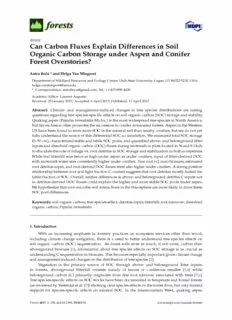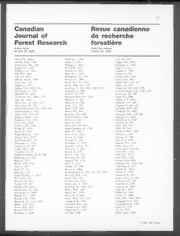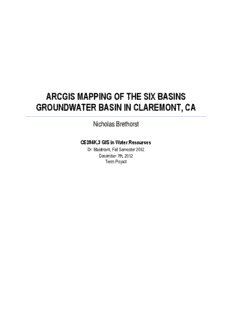
arcgis mapping of the six basins groundwater PDF
Preview arcgis mapping of the six basins groundwater
ARCGIS MAPPING OF THE SIX BASINS GROUNDWATER BASIN IN CLAREMONT, CA Nicholas Brethorst CE394K.3 GIS in Water Resources Dr. Maidment, Fall Semester 2012 December 7th, 2012 Term Project SIX BASINS GROUNDWATER BASIN SIGNIFICANCE 2 ACKNOWLEDGEMENTS I would like to thank Dr. Maidment and Dr. Jones for the guidance and help on this term project. Without your time, wisdom, and guidance, I would have not been able to complete this project as initially proposed. Thank you all so much with the help on how to use Arc Hydro Groundwater Tools. ArcGIS is an amazing program and the tremendous effort you two have contributed to the creation and evolution of this program has made colossal contributions to the field of water resources engineering. Water resources engineering will never be the same due to ArcGIS, and the knowledge and tools I have gained from this class have provided me with nearly endless capabilities within this field. Also, I need to give a tremendous thanks to Gonzalo Espinoza. Gonzalo, you spent countless hours helping me during your office hours. I cannot thank you enough! I would not have accomplished as much as I did, if it wasn't for your help. You are an outstanding teaching assistant and I hope you continue to help future students understand how to use ArcGIS and expand their capabilities with this program. UT Austin is very fortunate to have you around. I wish you all the best in your pursuit of a Ph.D. I am very happy to know that another incredibly intelligent person such as yourself will make another stellar professor, engineer, and or researcher, who will make significant contributions in this world. Thank you all so much! I am truly grateful and lucky to have taken this class. It has been an honor and privilege. Nick Brethorst SIX BASINS GROUNDWATER BASIN SIGNIFICANCE 3 TABLE OF CONTENTS 1 SIX BASINS GROUNDWATER BASIN SIGNIFICANCE ....................................................................... 5 1.1 THE INCREASING IMPORTANCE OF GROUNDWATER ............................................................ 5 1.2 PROJECT OBJECTIVE ................................................................................................................. 8 1.3 PROJECT EXECUTION ................................................................................................................ 8 2 SIX BASINS ........................................................................................................................................... 9 2.1 SIX BASINS DESCRIPTION ......................................................................................................... 9 2.2 SIX BASINS DELINEATION .......................................................................................................... 9 3 SIX BASINS MONITORING WELLS ................................................................................................... 11 3.1 MONITORING WELL DESCRIPTION ......................................................................................... 11 4 FORD MONITORING WELL ............................................................................................................... 13 4.1 MONITORING WELL DESCRIPTION ......................................................................................... 13 4.2 TRANSDUCER HYDROGRAPH DESCRIPTION ........................................................................ 14 5 MW-1 MONITORING WELL ................................................................................................................ 15 5.1 MONITORING WELL DESCRIPTION ......................................................................................... 15 5.2 TRANSDUCER HYDROGRAPH DESCRIPTION ........................................................................ 16 6 MW-2 MONITORING WELL ................................................................................................................ 17 6.1 MONITORING WELL DESCRIPTION ......................................................................................... 17 6.2 TRANSDUCER HYDROGRAPH DESCRIPTION ........................................................................ 18 7 MW-3 MONITORING WELL ................................................................................................................ 19 7.1 MONITORING WELL DESCRIPTION ......................................................................................... 19 7.2 TRANSDUCER HYDROGRAPH DESCRIPTION ........................................................................ 20 8 OLD BALDY TUNNEL #4 MONITORING WELL ................................................................................. 21 8.1 MONITORING WELL DESCRIPTION ......................................................................................... 21 8.2 TRANSDUCER HYDROGRAPH DESCRIPTION ........................................................................ 22 9 POMONA #1 MONITORING WELL ..................................................................................................... 23 9.1 MONITORING WELL DESCRIPTION ......................................................................................... 23 9.2 TRANSDUCER HYDROGRAPH DESCRIPTION ........................................................................ 24 10 POMONA #20 MONITORING WELL ................................................................................................... 25 10.1 MONITORING WELL DESCRIPTION ......................................................................................... 25 10.2 TRANSDUCER HYDROGRAPH DESCRIPTION ........................................................................ 26 11 SAWC NO. 28 MONITORING WELL ................................................................................................... 27 11.1 MONITORING WELL DESCRIPTION ......................................................................................... 27 11.2 TRANSDUCER HYDROGRAPH DESCRIPTION ........................................................................ 28 12 SAWC NO. 33 MONITORING WELL ................................................................................................... 29 12.1 MONITORING WELL DESCRITION ............................................................................................ 29 12.2 TRANSDUCER HYDROGRAPH DESCRIPTION ........................................................................ 30 13 SIX BASINS GROUNDWATER PRODUCTION WELLS ..................................................................... 31 13.1 SIX BASINS WATERMASTER GROUNDWATER RIGHTS ........................................................ 31 13.2 SIX BASINS GROUNDWATER PRODUCTION WELLS ............................................................. 31 13.3 SIX BASINS GROUNDWATER PRODUCTION .......................................................................... 35 14 SIX BASINS SOIL PROFILE ............................................................................................................... 36 14.1 SIX BASINS SOIL CHARACTERISTICS ..................................................................................... 36 15 PRECIPITATION ................................................................................................................................. 40 SIX BASINS GROUNDWATER BASIN SIGNIFICANCE 4 15.1 PRECIPITATION DESCRIPTION ................................................................................................ 40 15.2 SIX BASINS PRECIPITATION .................................................................................................... 40 16 MONITORING WELL BORING LOGS ................................................................................................. 42 16.1 BOREHOLE PROFILE AND 2D CROSS SECTION .................................................................... 42 16.2 BOREHOLE PROFILE SIMPLIFIED ............................................................................................ 42 16.3 WEIGHTED POROSITY .............................................................................................................. 44 17 STORAGE CAPACITY ........................................................................................................................ 47 17.1 DESCRIPTION ............................................................................................................................ 47 17.2 THIESSEN POLYGONS METHOD ............................................................................................. 47 17.3 AVERAGE GROUNDWATER ELEVATIONS .............................................................................. 48 17.4 SIX BASINS STORAGE CAPACITY ........................................................................................... 49 18 SIX BASINS GROUNDWATER MODELING ....................................................................................... 50 18.1 GROUNDWATER MODELING DESCRIPTION .......................................................................... 50 18.2 GROUNDWATER MODELING RESULTS AND COMPARISON ................................................ 50 19 CONCLUSION ..................................................................................................................................... 57 19.1 SIX BASINS DESCRIPTION ....................................................................................................... 57 19.2 SIX BASINS DELINEATION ........................................................................................................ 57 19.3 SIX BASINS SOIL PROFILE ....................................................................................................... 57 19.4 SIX BASINS PRECIPITATION .................................................................................................... 57 19.5 SIX BASINS BORING LOGS, BOREHOLES, AND 2D CROSS SECTION ................................. 57 19.6 SIX BASINS MONITORING WELLS AND PRODUCTION WELLS ............................................. 58 19.7 SIX BASINS STORAGE CAPACITY ........................................................................................... 58 19.8 SIX BASINS GROUNDWATER MODELING ............................................................................... 58 19.9 PROJECT SUMMARY ................................................................................................................. 58 20 REFERENCES .................................................................................................................................... 59 21 APPENDIX 1.0 .................................................................................................................................... 60 SIX BASINS GROUNDWATER BASIN SIGNIFICANCE 5 1 SIX BASINS GROUNDWATER BASIN SIGNIFICANCE 1.1 THE INCREASING IMPORTANCE OF GROUNDWATER Southern California receives most of its potable water from two mega engineering water projects - The State Water Project and the Colorado Aqueduct. The State Water Project was completed in 1971 and is owned and operated by the California Department of Water Resources. This mega engineering water project is comprised of over 600 miles of concrete open channels and steel pipelines that transports 3.7 trillion gallons of water per year (3.7 x 1012 gallons of water per year) to five dams, beginning in the San Francisco Bay area and ending in Southern California (Rashidi, 2009), as shown in Figure 1. The Colorado Aqueduct was completed in 1961 and is owned and operated by the Metropolitan Water District. This mega engineering water project is comprised of 1,440 miles of concrete open channels and steel pipelines that transports 0.62 trillion gallons of water per year (6.2 x 1011 gallons of water per year) from the Colorado River to Southern California, where the water is distributed from Los Angeles to as far south as San Diego, as shown in Figure 1 and Figure 2. The Metropolitan Water District is comprised of 26 member agencies that are allotted both State Water Project and Colorado Aqueduct water, treat it, and distribute it to businesses and residents throughout their service areas, as shown in Figure 2. Combined, these two mega engineering water projects provide over 80% of the water supply for 24 million Californians across Southern California (Rashidi, 2009). Figure 1: California State Water Project and Colorado Aqueduct (Three Valleys Municipal Water District, 2012) SIX BASINS GROUNDWATER BASIN SIGNIFICANCE 6 Figure 2: Metropolitan Water District's Member Agency Service Area (Three Valleys Municipal Water District, 2012) Southern California's water demands are expected to increase nearly 20 percent by 2020 and the ability to meet the demand to supply a sufficient amount of water is becoming harder and harder (Groundwater Replenishment System, 2009). For decades, water purchased from outside of Southern California, such as the Colorado Aqueduct and State Water Project, provided a sufficient amount to Southern California's drinking water supply. However, that method has proven unsustainable in times of prolonged drought and increasing population growth. In recent times, these two projects have run into serious problems that have adversely affected their ability to supplement enough water to Southern California. Southern Californians have realized that they need to supplement their water supply with more sustainable alternatives because of these burdens. Since 2004, California has been experiencing a series of intermittent, yet prolonged droughts. Without the local supply that the rain provides, California has been forced to pump more water from the Colorado River to make up for the local supply deficit. However, this temporary solution created a long term problem. Over that period, the Colorado River has been over-pumped to meet the additional needs of Southern California, along with the growing population demands from other nearby states such as Arizona, New Mexico, and Colorado; states that also draw water from the Colorado River. The water supply deficit has been compounded due to the additional water allocation cuts from the State Water Project because of the Delta Smelt. The Delta Smelt is a small freshwater-fish population that lives in the San Francisco Bay area. The Delta Smelt has become endangered because their populations are being killed by the pumps that help transport water from the San Francisco Bay area to Southern California. To reverse this process, the pumps are being shut down and redesigned to minimize Delta Smelt death tolls. With the pumps shut down, less raw water for drinking water use can reach Southern California. SIX BASINS GROUNDWATER BASIN SIGNIFICANCE 7 In order to preserve a long term supply of import water, the Metropolitan Water District mandated a 30% water supply allocation cut from the Colorado Aqueduct and distributed the cut amongst its member agencies. In addition, the Metropolitan Water District enforced mandatory water conservation rules to its member agencies, that if not followed are punished by monetary penalties. Three Valleys Municipal Water District (TVMWD), one of the twenty six Metropolitan member agencies, witnessed that its allotment of annual water deliveries from the Metropolitan Water District decreased 10% from 70,000 acre-feet to 63,000 acre-feet (TVMWD, 2012). Three Valleys services nearly 500,000 people in 9 cities, as shown in Figure 3. Three Valleys has been planning to make up for the cut by bolstering its water supply through more efficient use of its groundwater supply, since a portion of its service area encompasses a small groundwater basin called the Six Basins. Figure 3: Three Valleys Municipal Water District's Service Area (TVMWD, 2012) The Six Basins refers to the region of the cities of Claremont, La Verne, Pomona and Upland, and surrounding unincorporated areas of Los Angeles and San Bernardino counties within Southern California. This land mass overlies six interconnected groundwater basins. These basins include Canyon, Upper Claremont Heights, Lower Claremont Heights, Pomona, Live Oak, and Ganesha Basins. The Six Basins has member agencies that oversee the management of the groundwater within the basin and all have several monitoring and pumping wells. These member agencies include The City of Upland, The City of Pomona, The City of La Verne, Golden State Water Company, Pomona College, Pomona Valley Protection Agency, San Antonio Water Company, and Three Valleys Municipal Water District. No mapping of the Six Basins has been conducted using sophisticated programs like ArcGIS, and in light of groundwater's increasing importance within this region, it would be interesting to see how groundwater pumping affects the Six Basins. SIX BASINS GROUNDWATER BASIN SIGNIFICANCE 8 1.2 PROJECT OBJECTIVE The objective of this term project is to map the Six Basins using ArcGIS and to try and determine how the groundwater basins are affected by groundwater pumping. 1.3 PROJECT EXECUTION The following steps will be taken to meet the Project Objective: 1) Delineate the Six Basins and its six subwatersheds using ArcGIS and various sources. 2) Determine the geology and soil characteristics within the subwatersheds. 3) Determine the annual precipitation within Six Basins using USGS and other sources. 4) Create a 2D soil cross section of the Six Basins using Boring Logs of three monitoring wells. 5) Using the 2D soil cross section, determine a weighted average porosity of the Six Basins. 6) Locate and gather information on all of the pumping wells and static water level monitoring wells within the Six Basins. a) Locate the pumping wells and static water level monitoring wells in global coordinates. b) Request static water level data of the monitoring wells from the Six Basins Watermaster. Add the static water level data using Excel to ArcGIS. c) Request pumping water level data of the pumping wells from the Six Basins Member Agencies. Add the pumping water level data using Excel to ArcGIS. 7) Determine the average static groundwater elevation and pumping groundwater elevation using the Thiessen Polygon Tools in ArcGIS. 8) Determine the storage capacity of the Six Basins using the weighted porosity and average static groundwater elevations and pumping groundwater elevations. 9) Model the basin, if possible in ArcGIS, for the following scenarios and make comparisons: a) With and without pumping the aquifer. SIX BASINS 9 2 SIX BASINS 2.1 SIX BASINS DESCRIPTION Six Basins is the name for the six interconnected groundwater basins underlying north eastern Los Angeles County and western San Bernardino County, specifically the cities of Pomona, Claremont, La Verne and Upland. The Six Basins are comprised of the Ganesha, Live Oak, Pomona, Lower Claremont Heights, Upper Claremont Heights, and Canyon Basins. The Six Basins area is bounded by the San Jose Hills to the south, the Chino Basin to the south and east, the San Gabriel Mountains to the north and the Main San Gabriel Basin to the west (TVMWD, 2012). 2.2 SIX BASINS DELINEATION A digital elevation model (dem) was found through the United States Geological Survey that spanned the Los Angeles and San Bernardino county (USGS, 2012). This dem was used to aid in the delineation of the Six Basins, as shown in Figure 4. The Six Basins drains into Puddingstone Reservoir, where an outlet point was placed. Using the outlet point, the dem, and ArcGIS Spatial Analyst Tools, the Six Basins was delineated as shown in Figure 5. The individual boundaries of the Six Basins were created by adding shapefiles that were requested from Three Valleys Municipal Water District, the former Six Basins Watermaster, as shown in Figure 5. Figure 4: Digital Elevation Model of the Six Basins SIX BASINS 10 Figure 5: Six Basins Delineated The Six Basins lies within five HUC12 Subwatersheds that span the Los Angeles and San Bernardino Counties within Southern California. The data was found off the United States Geological Survey (USGS) website and uploaded to ArcGIS. These HUC12 Subwatersheds include 180701060402, 180701060501, 180702030702, 180702030703, 180702030706, as shown in Figure 6. Figure 6: HUC12 Subwatersheds encompassing the Six Basins
Description:The list of books you might like

The 48 Laws of Power

Atomic Habits James Clear

Can’t Hurt Me: Master Your Mind and Defy the Odds

The Mountain Is You

The Fighting Tomahawk An Illustrated Guide to Using the Tomahawk and Long Knife as Weapons

DTIC ADA275521: CBSD: The Celestial Background Scene Descriptor

Tafseer E Fahm E Quran Vol 1

Be Your Own Herbalist

ERIC ED362642: Developments in the Curriculum for the Swedish MSc Programme in Agriculture.

Katharine Lauderdale vol 1 of 2 by F Marion Crawford
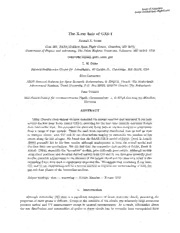
The X-ray Halo of GX5-1
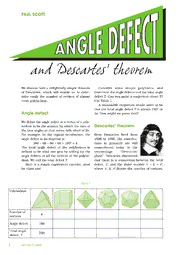
ERIC EJ743583: Angle Defect and Descartes' Theorem

Roctober #43

Cabanel, Alexandre Cabaret Voltaire Storia dell'arte Einaudi
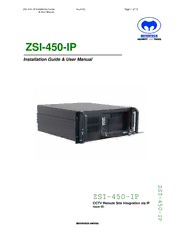
Meyertech ZSI-450-IP CCTV Remote Site Integration via IP User Manual (Issue 02)
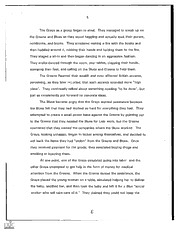
ERIC ED375369: Simulating Society: An Experimental Approach to Teaching Race/Class Relations.

Hopscotch: A Novel
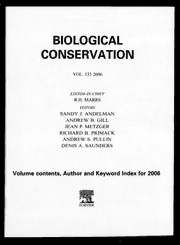
Biological Conservation 2006: Vol 127 Index
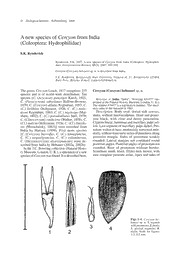
A new species of Cercyon from India (Coleoptera: Hydrophilidae)
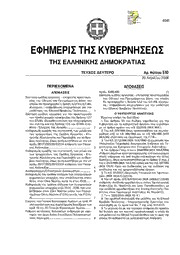
Greek Government Gazette: Part 2, 2006 no. 510
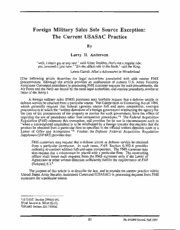
DTIC ADA495964: Foreign Military Sales Sole Source Exception: The Current USASAC Practice

